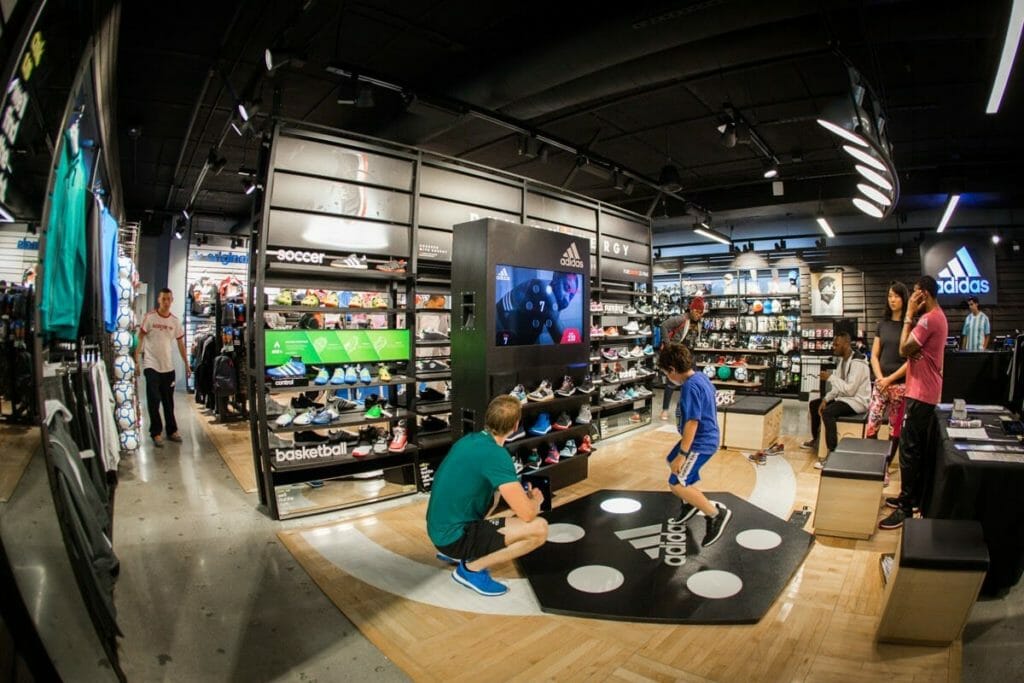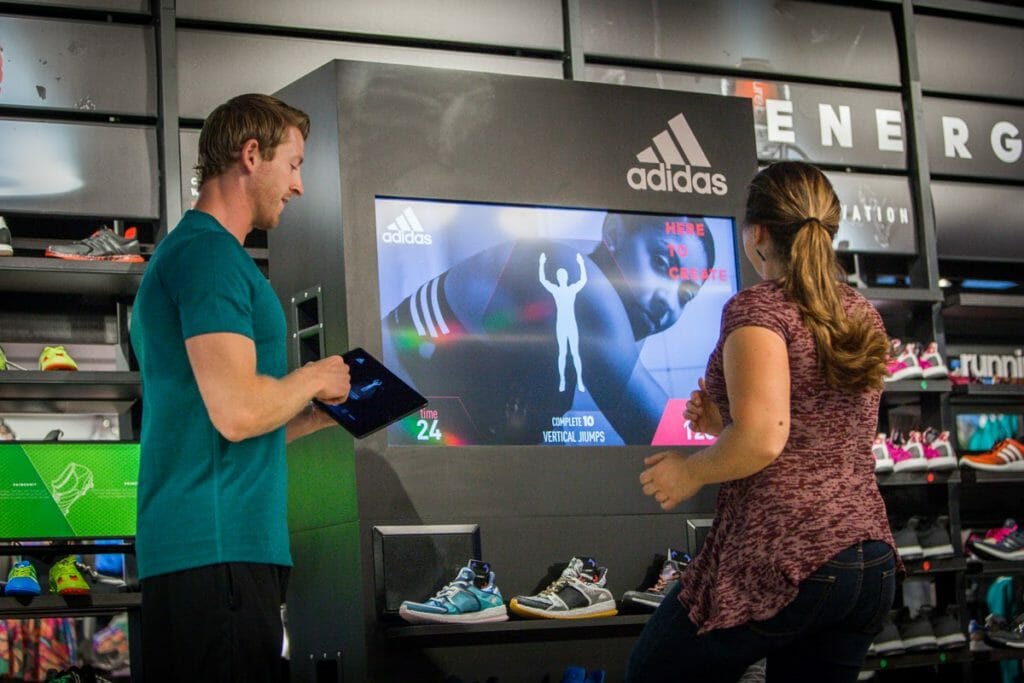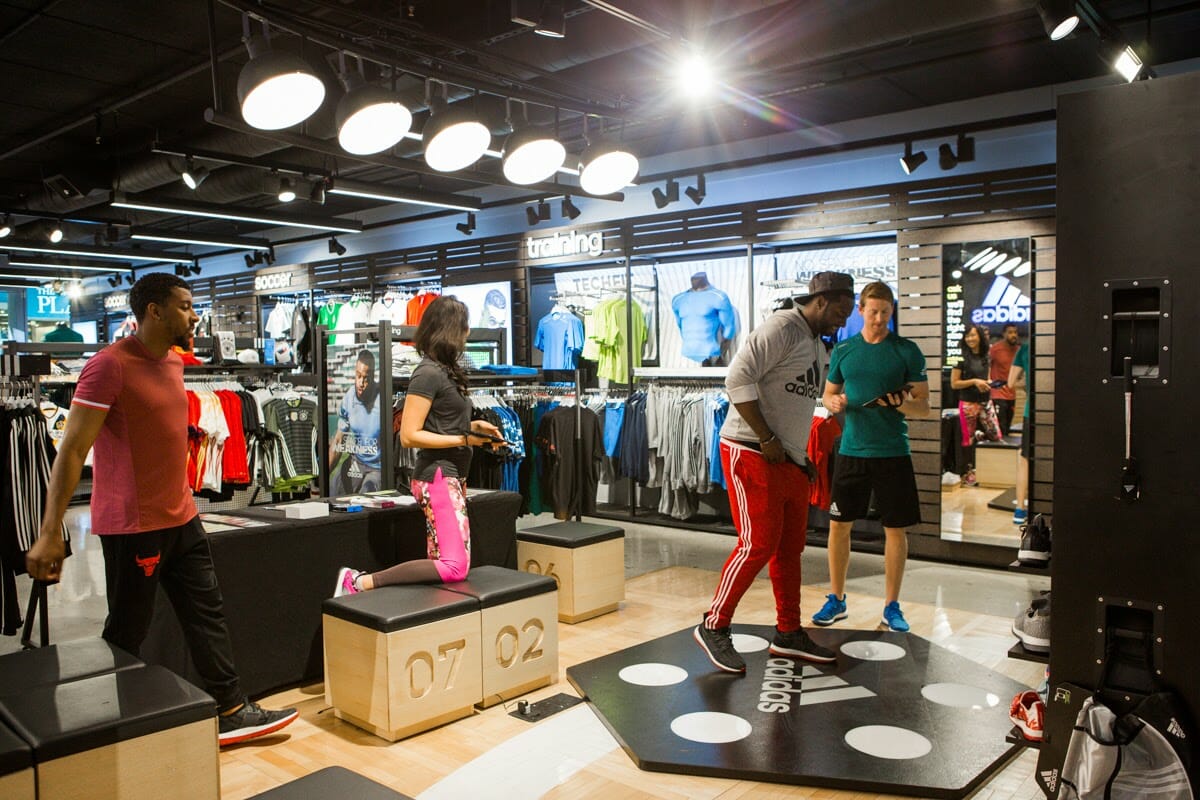Retail POP trends are changing quickly in the post-pandemic landscape. One trend that we see on the rise among retail firms and CPG brands is the digitization of points of purchase (POP). What was once a decidedly analog space now serves several essential digital marketing functions — both for retailers and for brands themselves.
Retailers are implementing a handful of strategies here, including touchless interaction at kiosks, dynamic pricing, and personalized offers that go far deeper than traditional sales. We recently covered these aspects and more in greater detail, so be sure to check out Retail Fixture Trends if you haven’t yet.
In today’s post, we’re focusing on what brands themselves are doing to extend their digital marketing reach into physical retail spaces. These efforts tend to have the same goals as the retail strategies: increased engagement and conversion.
Digital End Caps
Having a digital presence on an end cap isn’t exactly new. Big brands were installing obnoxious small TVs in Walmart stores in the mid-2000s. But those early efforts were grating and rarely effective. No one wants to stand at an end cap and watch a 30-second ad that was made for TV — and few people did.
In the decade and a half since then, technology has gotten sleeker, more intelligent, and much smaller. Today, it’s not unheard of to have a small brand activation take over a digital end cap. And brands and retailers alike have gotten savvy about how to use those digital end cap displays.
Whole Foods Market is one example. Instead of using digital end caps, also known as “smart shelves” to serve up conventional ads, the company took a more innovative approach in its new store format. It uses on-shelf digital displays to explain products in an engaging way rather than directly beg customers to buy.
Using a digital end cap to tout a product’s seed-to-shelf or bean-to-bar journey engages customers and makes them feel like they’re buying a product with integrity.
It’s easy to imagine other applications in the grocery market, such as a cooking video showing how to make the week’s meal kit. Customers who aren’t as comfortable in the kitchen might not even consider these grocery store kits, but an inviting video showing the simple steps could be enough to draw them in— and lead to a purchase.


Bluetooth-Connected Checkout Kiosks
Another significant development in retail is the Bluetooth-connected checkout kiosk. As a part of an overall influx of tech into the retail space, Bluetooth checkout devices represent a substantial change to the retail experience if they reach widespread adoption.
The basic idea behind one application of this technology is allowing customers to scan and check out without having to interact with a store employee or engage in a payment interaction with an employee. This technology is undoubtedly on the upswing in an age of increased caution around close contact due to COVID-19.
Devices such as 365Beacon enable customers to connect via their smartphones and then scan and securely pay for their purchases.

Mixing Offline and Online Experiences
Another brand-oriented digital initiative involves a blurring of the lines between offline, in-person experiences and online ones. Customers might pick up a product in-store but complete another part of the customer journey online, via QR code or app integration.
Starbucks has mastered this technique, with games and online star specials tying into real-world purchases in cafes and retail alike.

More and More Brand-Controlled Digital Displays
Not only are brands generally doing a better job implementing their in-store displays (such as in modern digital end caps), they’re also doing more of it. We’re seeing a proliferation of digital collections in retail, including displays supplied and controlled by brands, not the retailers themselves.
The cost to the retailer for these displays is minimal, though retailers do need the proper infrastructure in place to support them. A dead display in your store doesn’t do you any favors, and customers don’t care that it’s not technically your display.
The more digital displays in a particular space, the more crucial it becomes for those displays to be managed well. When done well, these digital efforts can create a cohesive and harmonious in-store experience. But done poorly, you run the risk of confusing and irritating customers with too much sound and visual information.
For more on the digital strategies described here, for help implementing physical or digital marketing initiatives, or for guidance harmonizing multiple digital strategies into a cohesive whole, Bluewater is here for you. Our team has a depth of industry experience in both retail design and digital marketing, and we can help you reach your goals. Reach out today for a free consultation to discuss our retail design services!













